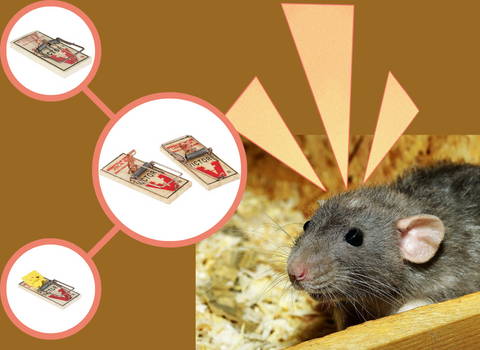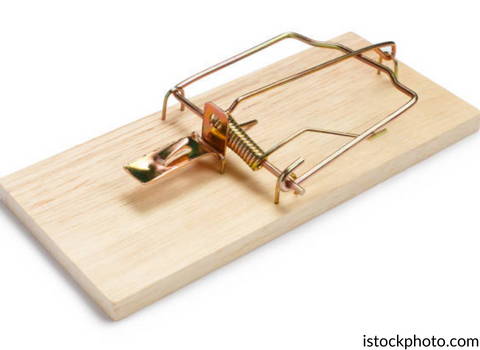Wooden Rat Traps: How to Make Them More Effective
Rats are among the most pervasive and unwelcome creatures coexisting with humans. Considering the damage they cause in many homes, rat traps have become necessary in rural, urban, and suburban areas. If you are dealing with a rat infestation, you should learn how to use a rat trap properly to get rid of them for good.
How to Use a Rat Trap
Since rats use fences and walls as guides, you will not find them in the middle of the yard or room. Thus, traps are effective when put along walls in low-light environments. In other words, you should hide the rat trap along paths or walls where they will travel.
For instance, you can place the rat trap inside clothes and under furniture like cabinets, sofas, and chairs sitting along the wall. You can cut holes on both sides of a shoebox and then place it along the wall or a possible rat path with the bait inside. This is a safe way to lure rats into the trap for pest control. The box will pique the rat’s curiosity and once it enters, it cannot come out.
You should also get them accustomed to the rat trap. Rats will be wary of new things in their environment, so placing the rat trap in obvious spots will not work.
You need to introduce the trap first by placing it in active areas, but do not do anything yet. Allow rats to trust traps. Let them feel that it is a safe trap for one to two days. Once they have accepted the trap as part of the regular turf, place the right bait in the trap then set it up. And just because the trap has not caught anything yet does not mean that it had not attracted anything.

It only means that the rat was smart enough to steal the bait without any problem. If you used a snap trap and it did not work, you can just try again. You do not have to use slow-working chemicals since the snap trap is made to kill rats upon contact for pest control. Thus, it is okay to use poison-free bait.
Adding poison to edible bait causes many problems. For instance, the poison could spread throughout the flooring if the rat drags the bait across your floor. The poison can be dangerous to children and pets in the house.
In addition, the poison increases the chances of rats meeting a slow death in a different part of your house. You would have a challenging time locating its rotting corpse. The best way to catch rats is by keeping the bait small and putting it in the middle of snap traps.
Setting Rat Traps
The roof rat and the Norway rat are among the common species found in the United States. Both species can be extremely destructive. Rat traps are safer and more dependable than poison.
Understanding how rats behave and baiting properly can also increase your chances of eliminating them and ensuring a successful pest control plan. So, how do you know if you have rats? Keep in mind that rats are active at night since they are nocturnal.
Also, they hide in dark spaces, so you might have a rat problem even if you do not see any sign of rodent activity. Thus, you should watch for signs of a large infestation such as the following:
Rat droppings
Dead or live rats
Gnawed wood or wires
Scratching noise from the attic or ceiling cavities or in the floor or wall
Piled nesting material or nest in hidden spots or secluded areas
Rat hairs in nests, near food, or along paths
Burrows under your home or around the yard
Rats prefer meats, some fruits, and grains, but they can eat anything. Their average lifespan is about one year but if they have food, warmth, and shelter, they can live longer. Rats are bigger than mice as they are 9" to 11" long, tail included. Compared to mice droppings that are only around ¼", rat droppings measure about ½" to ¾" long. Rats also love high places.
They usually build nests in tall shrubs and trees and on the upper level of the house like the attic. Rats are good climbers, so they can enter your house by simply running along cables, tree branches, and wires.

Rats need bigger traps compared to mice. They also avoid the rat trap that scares them off or does not attract them properly. To increase your success in catching rats, here are some things that you should observe when trapping rats for successful pest control.
Reuse traps since the smell left by rats caught in the traps can attract the next rat.
Be patient when setting a rat trap. As long as you place the bait properly and it has not been stolen by rats, it is okay to leave it for many days or weeks.
Set multiple rat and mouse traps. Place single traps in various locations to increase the possibility of catching rats and other rodents.
Avoid touching the trap with bare hands. Wearing gloves or using tools when setting traps is advised because the scent of humans can repel rats.
Avoid using poisoned bait as it introduces risk to your loved ones and pets.
Keep rat traps out of frequently used or living areas. You can also warn the children to avoid areas with traps. Also, you need to be careful about placing traps outdoors. Make sure that it will not be found by your pets or any wild animal.
How to Set a Victor Rat Trap
If you need a trap that you can use in your backyard, you can consider the Victor rat trap. It has a robust trigger mechanism. When the rat touches the bait tray, the trigger side releases the rod which springs the kill bar.
This trap is ideal for rats, chipmunks, and other larger rodents. Victor rat traps are safe for pets and children. You can also use it for predator control. Now, here is how you can set these rat traps.
Always wear gloves before setting the trap.
Place two to three Victor traps inside the rat tunnels in your backyard. Set the trap on a flat, even surface under cover or near compost or walls.
Fill the trap with bait like peanut butter to enhance its effectiveness. Do not forget to refresh it often and check the traps every few days until you get results. Before you open the tunnels, shake the traps to disable them inside.
When the catch rate declines, check the traps every two to three weeks. You will have to check the traps often if you are dealing with a large infestation for successful pest control.
It is a humane way to kill rats. When the rat touches the bait pedal to investigate the bait, the trigger will snap the trap shut. The high impact of the kill bar immediately kills the rat. Thus, it is important to find a high-quality rat trap with a hook. Get your Victor wooden rat trap below.
Pre-Baiting for Rats
Pre-baiting is an effective way to train rats to become familiar with the trapping area. It is also easy and simple to do. You can start by laying out at least 10 dots of the pre-feed lure or bait around the entrance of the trap. Make sure that it is set properly. It might seem counterproductive since you are feeding rats, but this will improve the success rate of your traps later on. Repeat the same process within the next five days.
At this point, the rodents have learned that there is always delicious food waiting for them. This is also the point where you have to spot putting the bait around the traps. The rats will continue visiting the trap to search for a free meal only to find that it is only available inside the trap. You just need them to overcome their fear and enter the trap to search and get their meal.
Pre-baiting can help lure rats with a deep sense of caution or hesitancy, but it also has some cons. The most frequent problem is competing for food sources. Pre-baiting works since the rodents are seeking food sources to rely on.
If they can access food easily and quickly, they will not be lured by the bait. And if they are not approaching the traps after pre-baiting, you have to find nearby food sources. Mice and rats can chew food containers. If they have direct access to food in the kitchen, they will not have any reason to try your bait.
Placing Rat Traps Strategically Helps Its Effectiveness
You can place traps and bait for trapping mice and rats in various positions. However, the rats and mice might still miss the bait. In that case, you can place the bait in a different spot to catch their attention. Avoid placing high-quality traps in a location with high foot traffic. The rats will avoid those areas, so you should place several traps in quiet locations.
Do not worry about your fingers when using a mouse trap. Although the kill bar's force can kill a mouse, it will not break your fingers. However, it will still hurt.
On the other hand, rat traps are four times stronger and larger than mouse traps. Plus, they have serrated edges that could break your fingers. If your fingers are not broken, you could have pinched nerves or severe bruising. Thus, you should be careful when putting the bait to trap rats.
Best Bait for Rat Trap
If you are using bait traps, consider the rat’s diet when choosing bait. Varied species of rats consume various kinds of food. For example, brown rats that usually dig through garbage and enter homes through small cracks may be tempted by cheese since they are omnivores. Black rats, which are herbivores by nature, can be lured with peanut butter.
Whether you are dealing with an omnivore or herbivore, foods with strong odors like fish, moldy cheese, and nuts can attract rats and lure them into traps. You can glue the bait in place or tie it with a fine wire or thread after you set the trap.
Some rat traps have a tiny cup where you can place the bait. All you need to do is place the bait like peanut butter or dried nuts inside this cup to force the rat to work harder and increase the possibility of catching it. Set as many traps as possible to get rid of rodents quickly.


